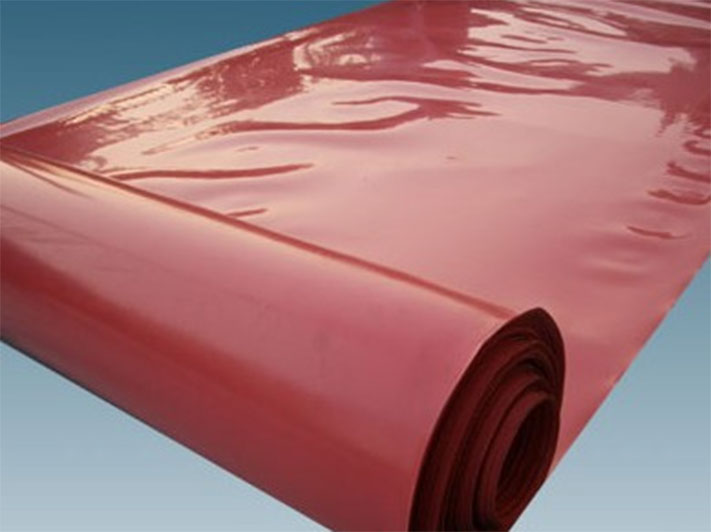
Thermoplastic polyolefin (TPO) waterproof membrane
- Package : Roll
- Coil width (m) : 2.05/2m
- Coil thickness (mm) : 1.2 1.5 2.0
- Coil length (m) : 20m
- Area (㎡/roll) : 40㎡/41㎡
- Classification : Homogeneous (H) interlining (L) and reinforced reinforced (G)
 Thermoplastic polyolefin (TPO) waterproof membrane (referred to as TPO waterproof membrane) is made of TPO resin based on the combination of the weather resistance and heat resistance of ethylene propylene (EP) rubber and the weldability of polypropylene. . In the early 1990s, it was applied to roof waterproofing projects by mechanically fixed paving. Because it has both the weather resistance of EPDM rubber and the weldability of plastic waterproof membrane, the waterproof effect is reliable, and the aging resistance is outstanding, so it has developed rapidly. The coil has become the fastest growing waterproof material in the world due to its excellent physical and chemical properties and environmental performance. In the United States, TPO waterproof membranes have accounted for 30% of the US low-slope commercial roofing materials market, and maintain an average annual growth rate of more than 25%. In recent years, with the development of mechanically fixed single-layer roofing systems, high-performance, energy-saving, and environmentally-friendly TPO waterproof membranes have also seen rapid development in China.
Thermoplastic polyolefin (TPO) waterproof membrane (referred to as TPO waterproof membrane) is made of TPO resin based on the combination of the weather resistance and heat resistance of ethylene propylene (EP) rubber and the weldability of polypropylene. . In the early 1990s, it was applied to roof waterproofing projects by mechanically fixed paving. Because it has both the weather resistance of EPDM rubber and the weldability of plastic waterproof membrane, the waterproof effect is reliable, and the aging resistance is outstanding, so it has developed rapidly. The coil has become the fastest growing waterproof material in the world due to its excellent physical and chemical properties and environmental performance. In the United States, TPO waterproof membranes have accounted for 30% of the US low-slope commercial roofing materials market, and maintain an average annual growth rate of more than 25%. In recent years, with the development of mechanically fixed single-layer roofing systems, high-performance, energy-saving, and environmentally-friendly TPO waterproof membranes have also seen rapid development in China.

1. TPO coil material uses advanced polymerization technology to combine ethylene-propylene rubber and polypropylene, combining the excellent weather resistance of ethylene-propylene rubber and the weldability of polypropylene.
2. Special formula technology, no need to add any additives that make the material brittle, do not produce general hot welding coiled material (such as PVC) becomes brittle due to plasticizer migration, and maintain long-term waterproof function.
3. There is a layer of polyester fiber fabric in the middle, which provides high tensile performance, high tear strength, fatigue resistance and puncture resistance of the coiled material. It is more suitable for mechanically fixed roofing systems.
4. Excellent high and low temperature resistance, like rubber materials, it still maintains flexibility at 40 ℃, and maintains mechanical strength at higher temperatures.
5. Chemical resistance, acid, alkali, salt, animal oil, vegetable oil, lubricating oil corrosion, algae, mold and other microorganism growth.
6. With excellent root puncture resistance, it can be used as a root puncture resistant roll for planting roofs.
7. Heat-resistant aging, good dimensional stability.
8. Light-colored surface mainly white, smooth surface, high reflectivity, energy saving effect and pollution resistance.
9. There are no plasticizers and chlorinated polymers in the ingredients. No harmful gas is generated and released during welding and use, which is harmless to the environment and human health.
10. The lap joint adopts hot welding construction, which can form a high-strength reliable sealed waterproof layer.

Main points of mechanical fixing system construction
Primary treatment:
1. The base layer must be level, dry and clean, free from hollowing, sanding and cracking. Accumulated water, ice or snow must be removed to prevent moisture absorption in the new roof section and level system. Before laying the coiled material, remove the debris and foreign objects on the base.
2. Pre-laying of TPO coils: Lay the coils at a predetermined position. The coils should be flat and straight, and the coils should not be stretched with force;
Mechanical fixing of the roll material under the lap area:
1. Fix the coiled material with fixings. The center distance of the fixings is determined by the local wind speed, the type of structural base, the height of the building and the width of the coiled material, and should not be greater than 600mm. TPO coils within 800mm from the periphery should be fully tacky.
2. In addition, all the changes in the height of the roof, the side walls of the protruding parts, the skylights, the deformation joints, the perimeter of all the base angle changes of the slope greater than 16, and all the pipes and the pouring sealant hoop groove require the roll material fixed.
Hot air welding:
Use an automatic hot air welding machine or a hand-held hot air welding machine and a silicone rubber roller to weld TPO coils with hot air. At the intersection of all seams, roll the seam with silicone roller to ensure the continuous seam of the hot air welding seam. The surface irregularity caused by the multi-layer thickness of the TPO coil may cause false welding.
Main points of full sticky system construction
1. The base glue can be painted on the base or on the bottom surface of the TPO coil. The painting should be even, without showing the bottom or stacking (also can be sticky, spot or empty)
2. Welding method is used to construct the overlapping area. The long-side lap joint should be welded first, followed by the short-side lap joint.
3. The bonding method is suitable for all kinds of buildings on the cement concrete base. The construction process and key procedures are the same as all kinds of polymer waterproof membranes bonded with adhesives.
Contact
Add:Taitou Town Industrial Park, Shouguang City, Shandong Province
Mail:rongjing@rongjingwaterproof.com
Facebook:+86-18653628345
Whatsapp:+86-18653628345
Wechat:+86-18653628345

Scan code
Copyright by@2020 Weifang Rongjing Waterproof Engineering Co., Ltd. 鲁ICP备14020741号-1 Power by:www.300.cn
 >
> 




